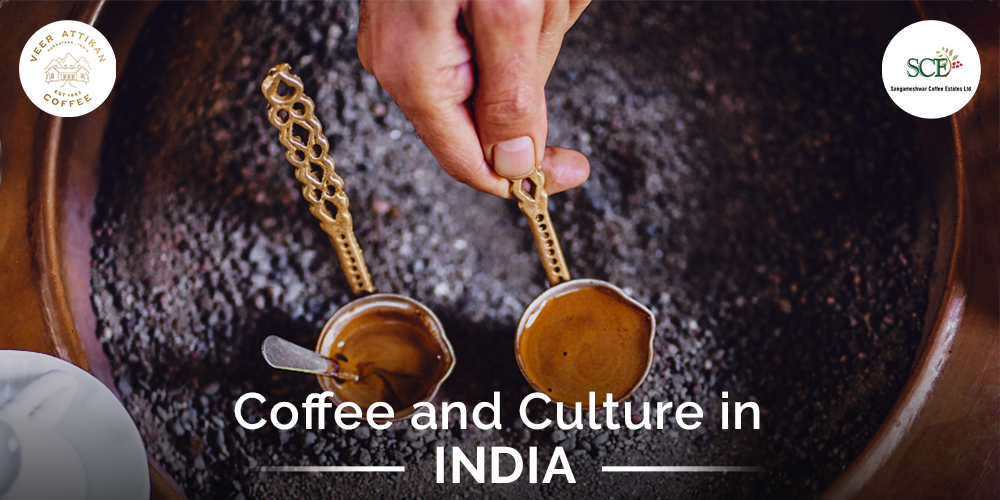Costa Coffee Global CEO Bullish On Growing Coffee Culture In India; With The Coffee Market Worth Exceeding US$466 Billion, India Emerges As A Significant Player In The Industry
Coffee is one of the most beloved beverages globally, and in India, it is the southern states that have traditionally seen coffee as their go-to beverage. However, things are changing, and coffee is now emerging as one of the most consumed beverages across India. It is now brewing with promise on the international stage, with both imports and exports touching new highs.

Costa Coffee‘s global CEO, Philippe Schaillee, sees India’s flourishing coffee cafe culture as highly shareable on social media; even as India has emerged as a significant market of coffee drinkers.
The statement comes in the backdrop of a media roundtable on Friday, wherein he further went on to emphasise that there is no conflict of interest between Costa Coffee’s partnership with RJ Corp (PepsiCo’s largest bottler in India) and Coca-Cola’s ownership of Costa Coffee, which they acquired for $5.1 billion in 2019 to expand their global beverage portfolio and synergise with cafes.
Schaillee stated that they view their collaboration with Devyani International Ltd (DIL), the operator of Costa Coffee in India, as a valuable partnership and not in conflict with any other arrangements RJ Corp may have.

He recognised and stated how young Indian consumers have embraced cafe culture as a way to express their identity, socialise with friends and family, and enjoy a unique social environment.
Hence, Costa Coffee is actively working to establish itself as a lifestyle brand in its growth markets, with a particular focus on India due to its immense potential.
Costa Coffee’s plans in India include opening 45-50 stores annually for the next five years, intending to target the 25-30 million consumers in India who already have an interest in speciality coffee and expand into smaller markets as well.
The British chain plans to explore opportunities beyond major cities, including airports, train stations, and office campuses, tailoring its offerings to specific segments while also aiming to enhance same-store sales.
Schaillee noted that India is among the top 20 coffee markets globally, and a shift from tea to coffee is occurring, driven by the younger generation and major metropolitan areas of tea-drinking countries, coffee consumption per capita is now on par with the US and Germany averages, marking a significant shift over the past decade or so.
Notably, DIL reported an impressive 83% year-on-year sales growth for Costa Coffee in the quarter ending June 2023, indicating the market’s potential.
Several players, including Costa Coffee, Tata Starbucks, Cafe Coffee Day, Barista, Pret a Manger, Tim Hortons, and Third Wave, are significantly contributing to the flourishing cafe culture in India.
However, while expressing their commitment to growth, Schaillee also stated the need for agility and the possibility of closing stores in the event of crises.

Costa Coffee India
In India, Costa Coffee operates through its franchise partner DIL, which is promoted by RJ Corp Ltd, a PepsiCo bottling partner.
As of March 31, 2023, DIL operated 112 stores in India, generating revenue from operations of Rs 101.8 crore; the average daily sales (ADS) for Costa Coffee stores in India for FY23 stood at Rs 35,000 per store.
DIL recently entered into a strategic agreement with leading multiplex operator PVR Inox to offer Costa Coffee’s handcrafted hot and cold coffee at select premium screens.
India’s Growing Coffee Segment
India stands out as a market with substantial growth opportunities, with per capita coffee consumption at 20-30 cups per year compared to 200 cups globally.
The coffee cafe franchise market in India, estimated at Rs 4,500 crore, is growing at 8-9% annually, driven by factors such as the younger demographic, new coffee varieties, increased disposable incomes, and effective social media marketing by coffee chains.
India, consistently ranking in the top 10 coffee-producing countries, is witnessing an unprecedented worldwide demand; notably, India’s coffee consumption primarily focuses on exports, which doesn’t significantly impact the local price dynamics.
Indian coffee is renowned for its exceptional quality and is highly sought-after in foreign markets; it boasts two primary varieties: robusta, known for its strong flavour and versatility in creating various blends, and arabica, celebrated for its delicate fragrance.

Indian Coffee industry
Production
The majority of coffee production in India occurs in the southern region, with Karnataka leading the pack, contributing around 70% of the total coffee output.
Kerala follows, albeit with a lower share of approximately 23%, and Tamil Nadu stands in third place, accounting for 6% of the country’s total coffee production.
Notably, the Nilgiri district in Tamil Nadu is a significant arabica coffee hub; other regions like Orissa and the northeastern areas play a smaller role in India’s coffee production landscape.
Historical Shift
Initially, India primarily focused on coffee exports; however, in the 1950s, the Indian government implemented policies to promote domestic coffee consumption, leading to the emergence of a thriving coffee culture within the country.
Types of Coffee
India predominantly produces arabica and robusta coffee, each offering a unique taste profile that contributes to the country’s reputation for distinctive coffee flavors.
Consumption
Although tea remains the most widely consumed hot beverage in India, coffee consumption has steadily risen, particularly among the younger generations and urban populations.
Coffee shop chains like Café Coffee Day and Starbucks have played a significant role in expanding India’s coffee culture beyond traditional filter coffee to include cappuccinos and lattes.
Industry Analysis
The Indian coffee market has experienced significant growth driven by increasing demand from both domestic and international consumers. The industry is currently valued at approximately INR 25,000 crore and is expected to continue its steady growth.

Export Trends
India is a significant player in the global coffee market, primarily exporting robusta coffee beans, with a notable presence in Europe, particularly Italy, Germany, Belgium, and the Russian Federation.
Speciality coffee and instant coffee make up a substantial portion of India’s coffee exports.
Import Trends
India has also seen an increase in coffee imports, with countries like Vietnam, Uganda, Indonesia, Cote d’Ivoire, and Brazil supplying most of the imported coffee.
Growth Potential
Despite challenges such as competition, climate change, limited suitable land, fluctuating global prices, and the need for marketing efforts to promote Indian coffee brands, the industry has substantial growth potential.
Initiatives promoting sustainability, quality, innovation, and awareness of coffee culture in India are poised to further boost the industry’s growth.

Future Outlook
The coffee sector is anticipated to create US$0.92 billion in revenue in 2023, with an annual growth rate of 2.06%. (CAGR 2023-2025). With revenue of US$95,580.00m in 2023, the United States will dominate the international market. In 2023, each person is anticipated to contribute an average of US$0.65 to the revenue.
By 2025, spending on out-of-home consumption is expected to represent 54% of total spending and 6% of total consumption and the Coffee segment is expected to have a total volume of 50.68 million kg, growing at a 2.3% annual rate. The typical person is projected to consume 0.03 kilogram of coffee by 2023.
The Last Bit, India’s coffee industry, with its rich heritage and growing popularity, is well-positioned for continued success both domestically and globally.
The rise of speciality coffee, growing domestic consumption, and increased exports signify a promising future.




